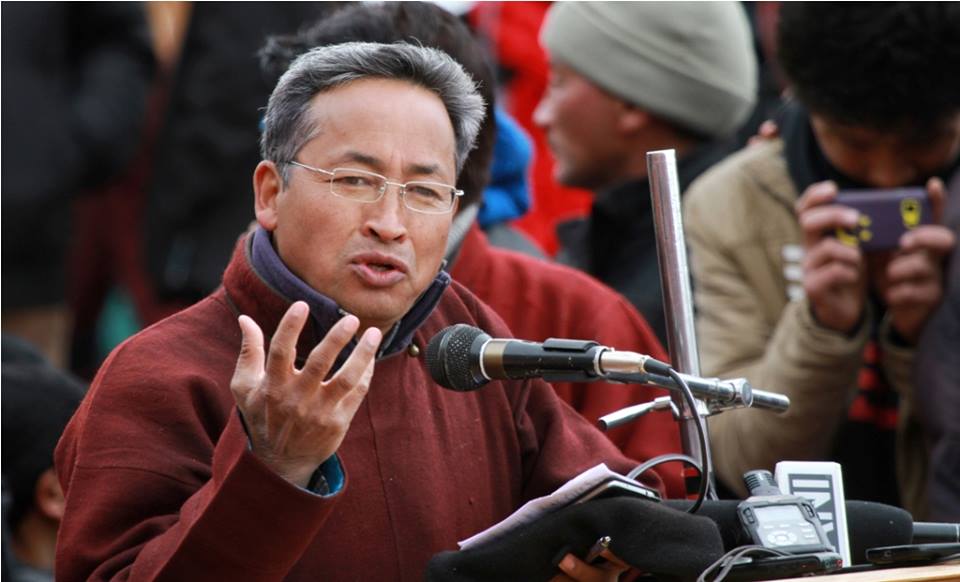Sonam Wangchuk- The stupid child from India who won the Rolex award!
Wangchuk from Ladakh, India is among the five Rolex award recipients of 2016, chosen from 144 participating countries. Ironically, at the age of nine, when he first moved to Srinagar, Sonam Wangchuk was thought to be a stupid child!
The reason was he didn’t look like his peers and would not respond to their addressing as he would not understand their language. This was the darkest period of his life. Unable to bear the treatment, he escaped to Delhi. After pleading his case to the principal, he got admission in the Vishesh Kendriya Vidyalaya (Special Central School).
He then went to National Institute of Technology, a premier Engineering Institute in India (known as REC at that time), to pursue an Engineering degree. He financed his own education by teaching students of tenth grade during his summer vacation. This experience was enlightening for him and it was here that he decided to enhance the education system rather than adding one more engineer to the crowd.
With this in his mind he founded SECMOL, the Students Educational and Cultural Movement Of Ladakh. SECMOL later launched Operation New Hope in collaboration with government education department and village population, which led the rise of 10th grade exam results from 5% to 75%! One more peculiarity of SECMOL is that it is powered by solar energy alone. And even in the numbing temperature of -30 degree Celsius, it is capable of keeping the students warm.
This was just the beginning of Sonam’s innovations.

Sonam Wangchuk- The real Fung Suk Wangdu
In January 2014, Scrutinizing the situation faced by farmers in the critical planting months of April and May, he launched a project called Ice Stupa (artificial glacier), to find a solution against water crisis.
Before Sonam, many change-makers tried to build artificial glaciers. The solution was indeed feasible but had its own limitations.
‘I saw the problems these people were facing. The artificial glaciers were built at a very high altitude and villagers or workers were reluctant to climb so high. I wondered why we couldn’t construct glaciers right there in the village. The temperature is low enough to keep the water frozen – we just needed a smart way to make these glaciers,’ says Wangchuk.
Within two months, Sonam Wangchuk and his team successfully built a two story prototype of ice stupa that could store around 150,000 liters of winter stream water which nobody wanted at time. The ice stupa was located at the height of 10,400 feet above the sea level, the lowest possible altitude and the warmest possible location. It was the most challenging location and if it could be build there, it could be built anywhere.
Another problem surfaced up when the complete project almost failed due to the low quality and spurious pipes supplied by unethical traders resulting in loss of 2.5 million Indian rupees and many days of hard work and labor put in by villagers and the team.
But Sonam Wangchuk, who is also said to be the inspiration behind the Rancho’s character in the superhit Bollywood movie 3 idiots (2009), is the last person who will quit his work after getting disheartened by a setback.
“We were cheated and disappointed and were staring at a failed project when thankfully Mr. Ajit Jain of Jain Irrigation stepped in to supply the correct pipes immediately and Commander B. Manikantham of the Indian Air Force volunteered to airlift the pipes to Phayang. That is how we were able to salvage the project,” says an optimistic Wangchuk.
In addition to a solution to the ultimate water crisis, Ice Stupas also reduces the threats caused by glacier lake outbursts floods or GLOF. The Himalayan states of India- Sikkim, Uttarakhand, Himachal Pradesh and Jammu & Kashmir are surrounded by about 300 potentially dangerous lakes formed by glacier melt. His efforts were appreciated worldwide and he received the honorable Rolex award in 2016.
With this endeavor, Wangchuk and his team intend to build up to 20 ice stupas, each 30 meters in height and capable of supplying millions of liters of water.
“The Rolex Award funds will support the project and promote ice stupas as a climate-change adaptation and desert-greening technique,” Mr Wangchuk said in a statement released by Rolex.

Yogesh Pandey is the author of the novel, The Pragmatic (2016). He is currently pursuing his masters from Fergusson College, Pune.
He also runs a YouTube channel named Hard Reads, which is all about books and reading. He is an avid reader and is doing research in the field of Astrophysics.